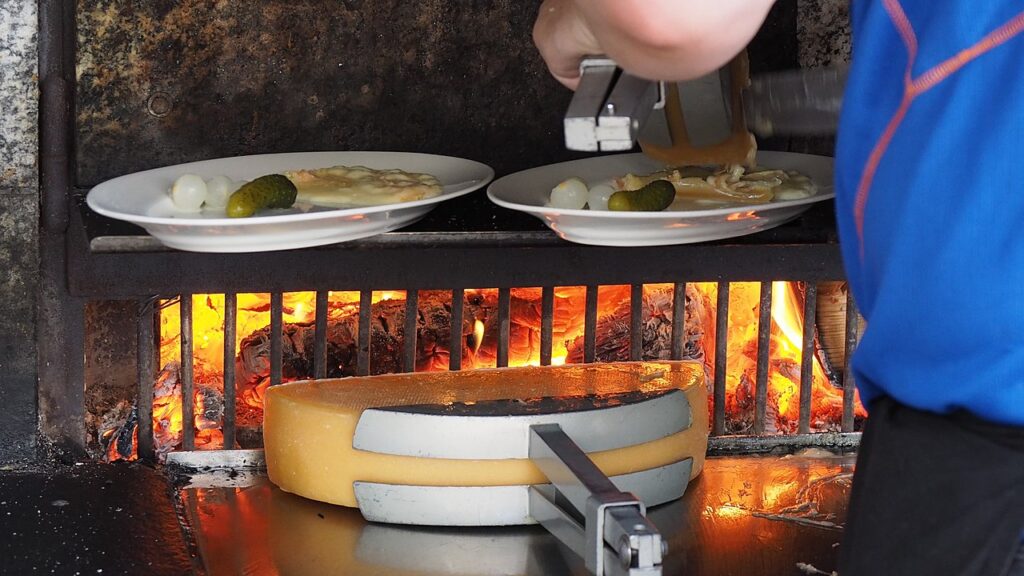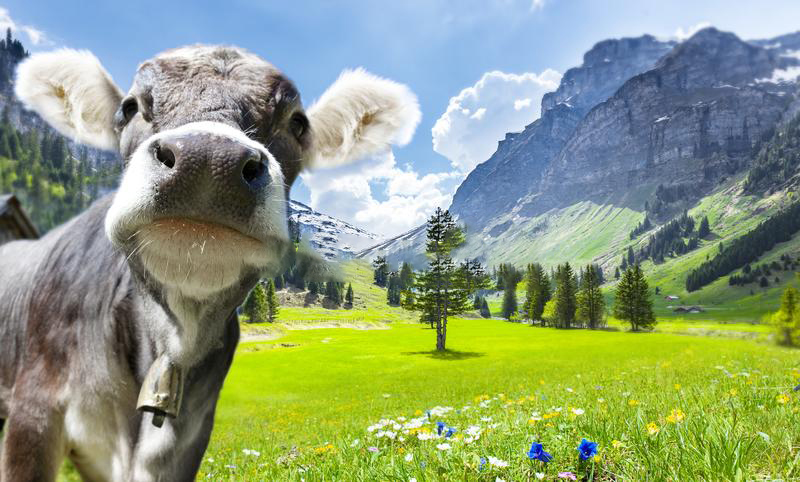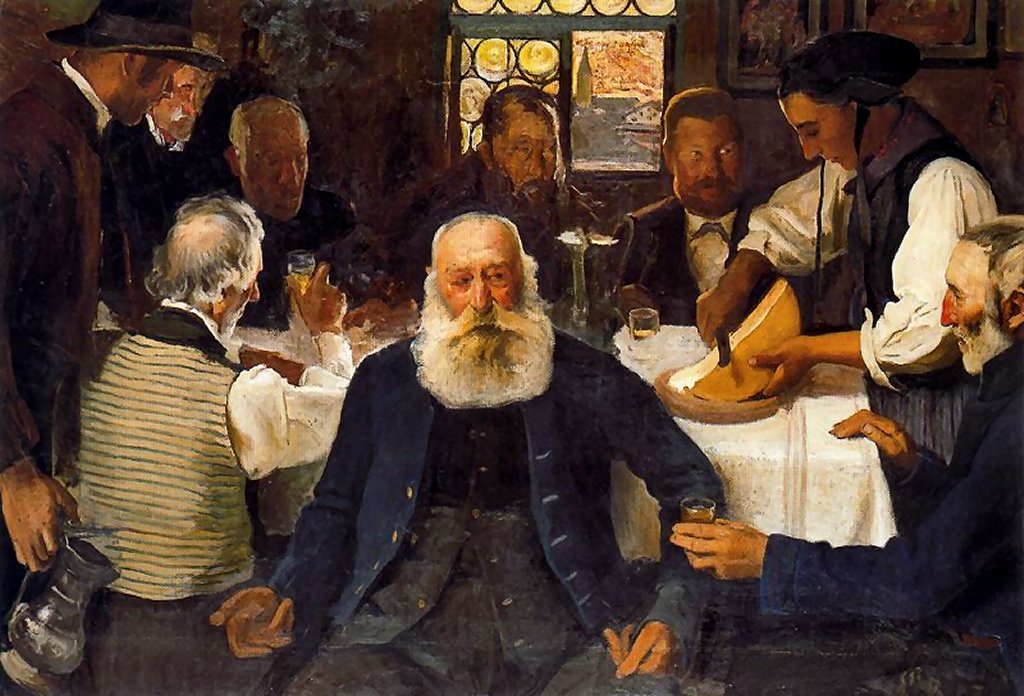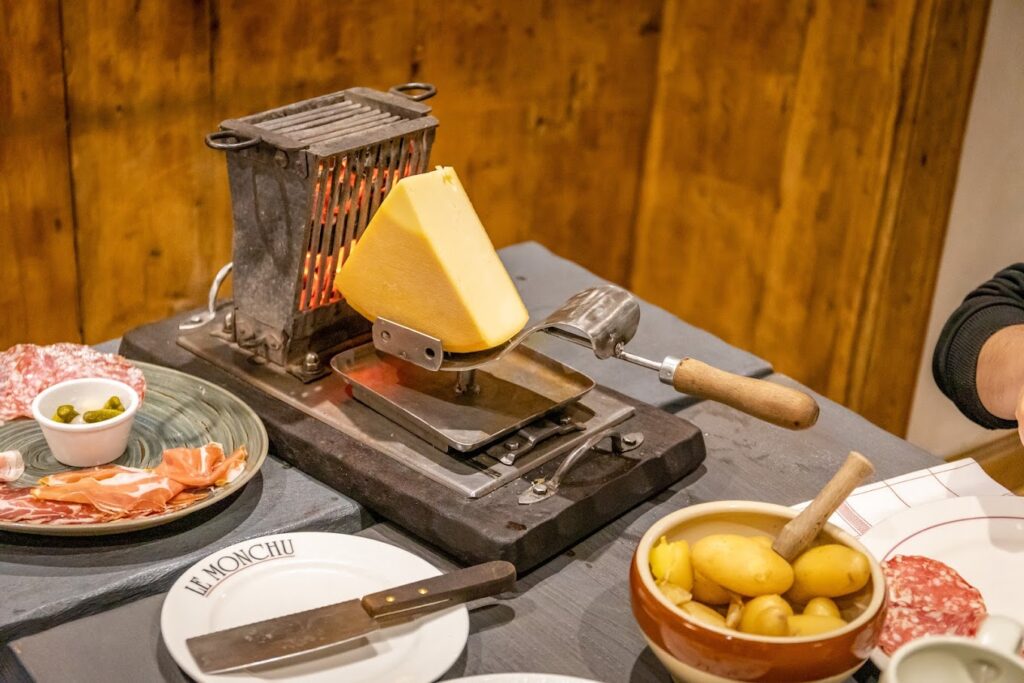Alpine cuisine is very cheese-centric, and with good reason. It seems in some parts of the Alps there are more happy cows than people wandering around the meadows enjoying the beautiful vistas. I always rave about the milk, cream, and butter in the Alps – there’s obviously a connection between the free range dairy cows munching on wildflowers and drinking from glacial melt streams and the rich, sweet milk they produce. And of course, the people of the Alps have become experts at preserving all of that milk in the form of cheese.
There are many ways that Alpine cheese is consumed – fondue is of course the one that comes to mind when you think of the Alps, particularly the Swiss Alps. However, for me, after a long day hiking or skiing in the mountains, Raclette is the way to go. This traditional cuisine has its roots in the medieval era, when cow herders moving cattle through the high Alpine meadows would carry blocks of hard cheese for their evening meals, setting them beside their campfires to melt the outer layer so it could be spread on the stale bread they had to eat while away from their villages.
Today Raclette is served a couple of different ways – in Switzerland it will usually be melted by a large wood fire and scraped onto plates by servers.

Traditional Swiss Raclette – half the block warms up while the server scrapes the melted part off the other half.
I prefer the French method, popular in Chamonix, where the server actually brings a small Raclette oven to your table and you melt the raclette as you go. It’s always perfectly hot and melty! It is usually served with boiled potatoes, ham, and pickles and a glass of Savoy wine. Such a simple dish, but simply delicious!
Join us for a proper tableside Raclette dinner in Chamonix on our Very Best of the Alps Tour!




That looks amazing, like something I want to try!